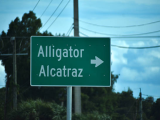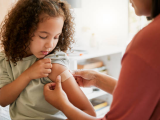May 24, 2011
School closing, social distancing may have slowed H1N1 spread in Mexico
Closing schools for 18 days and implementing other social distancing measures lowered 2009 H1N1 flu transmission 29% to 37% in Mexico during the pandemic, according to a modeling study published today. Researchers from the Fogarty International Center at the National Institutes of Health applied mathematical modeling to flu surveillance data compiled by a large private health system that covers 40% of the Mexican population. The study provides the first comprehensive epidemiologic description of the age, geographic, and severity pattern of the pandemic in Mexico, according to the study authors. The nation experienced an initial wave in April and May of 2009 in the Mexico City area, a second wave in June and July in southeastern states, and a widespread third wave from August through December. "The interesting finding is that school closures and other social distancing measures during the first wave were associated with a reduction in the transmission rate by approximately 29% to 37%," said Gerardo Chowell-Puente, a Fogarty investigator and assistant professor at Arizona State University (ASU), in a press release. "That is a significant change for a rapidly disseminating pandemic virus." The pandemic caused at least 1,500 deaths in the country and hit young people especially hard, according to the release.
May 24 PLoS Med study
May 24 ASU press release
Pandemic H1N1 hit patients harder than seasonal flu
Patients hospitalized for pandemic 2009 H1N1 influenza had higher rates of intensive care unit (ICU) admission and death than did those with seasonal influenza, according to a study in the Journal of Infectious Diseases. Hong Kong researchers who compared 382 H1N1 patients with 754 seasonal-flu patients from 2007-08 found that H1N1 patients were younger (median age 47 vs. 70) and had higher rates of extrapulmonary complications (23% vs 16%; P = .004). In addition, the likelihood of ICU admission or death was about three times higher in H1N1 patients but varied by age-group (under 35 years, 2.3% vs 0%; 35-65 years, 12.4% vs 3.2%; over 65 years, 13.5% vs 8.5%). The study also found that antiviral use within 4 days after symptom onset likely improved survival, but among those without timely treatment, mortality risk was higher in the H1N1 patients (9.0% vs 5.8%). The authors conclude, "Adults hospitalized for pH1N1 influenza had significant complications and mortality despite being younger than patients with seasonal influenza."
Jun 15 J Infect Dis abstract
Phase 3 trial shows good immune response to GSK H5N1 vaccine
A large phase 3 trial showed that two doses of an adjuvanted H5N1 influenza vaccine made by GlaxoSmithKline (GSK) were "highly immunogenic" and safe in adults, according to a report in the Journal of Infectious Diseases. The randomized, placebo-controlled trial included 4,562 participants from 18 to 91 years old, with 75% receiving the vaccine and 25% getting a placebo. The vaccine, given in two doses 3 weeks apart, is based on a 2005 H5N1 strain from Indonesia and contains GSK's AS03 adjuvant. Antibody responses in the vaccine groups measured 21 days after the second dose met US and European immunogenicity criteria in all age-groups, the report says. Tests also showed cross-reactive antibody activity against a 2004 H5N1 strain from Vietnam. Injection-site reactions were more common with the H5N1 vaccine than the placebo, but the vaccine was well-tolerated overall.
Jun 15 J Infect Dis report


















